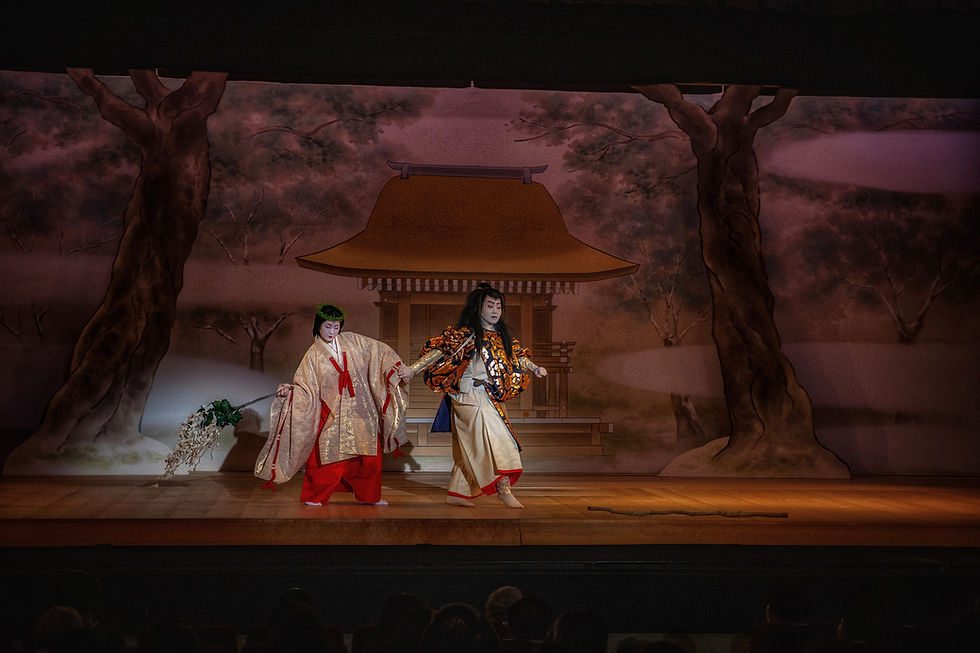Gion Odori 祇園をどり
- Robin Yong

- Dec 12, 2022
- 2 min read
Updated: Jan 2, 2023

Gion (祇園)is a district of Higashiyama-ku, Kyoto, Japan, originating as an entertainment district in the Sengoku period, in front of Yasaka Shrine (Gion Shrine). The district was built to accommodate the needs of travellers and visitors to the shrine. It eventually evolved to become one of the most exclusive and well-known geisha districts in all of Japan.
The geisha in Kyoto do not refer to themselves as geisha, instead using the local term 'geiko'. While the term geisha means "artist" or "person of the arts", the more direct term geiko means essentially "a woman of art".
Gion houses two hanamachi, or geisha districts: Gion Kobu (祇園甲部) and Gion Higashi (祇園東). The two were originally the same district, but split many years ago. Gion Kobu is larger, occupying most of the district including the famous street Hanamikoji, while Gion Higashi is smaller and occupies the northeast corner, centered on its rehearsal hall. Despite the considerable decline in the number of geisha in Gion in the last century, the area is still famous for the preservation of forms of traditional architecture and entertainment.
The geikos and maikos of Gion both perform annual public dances, as do all five geisha districts in Kyoto. The oldest of these date to the Kyoto exhibition of 1872. The more popular of these is the Miyako Odori, literally "Dances of the Old Capital" (sometimes instead referred to as the "Cherry Blossom Dances"), staged by the geisha of Gion Kobu, which dates to 1872. The dances run from April 1 through April 30 each year during the height of the cherry blossom (sakura) season. Spectators from Japan and worldwide attend the events, which range from "cheap" seats on tatami mats on the floor, to reserved seats with a small tea ceremony beforehand. Gion Higashi holds a similar dance in early November as the leaves begin to turn red, (held at the Gion Kaikan near Yasaka shrine) , known as Gion Odori. This is more recent and has fewer performances. The Gion Odori first started in 1952. Two performances are held each day at 13:30 and 16:00, and tickets cost 3,500 or 5,000 yen depending on seat type. Tickets are highly sought after and very hard to come by.

Okasan and my geisha friends were all very excited about my plans to visit Kyoto. They say I should try to come to the show. I have been to Japan 30 times now, and this is one of the best performances I have seen. Autumn has always been my favourite season and I am so glad that the Gion Odori is held in autumn. Gion Higashi has only got 13 geishas and they have all worked very hard to put this show together.

The geikos are dressed in black whilst the maikos are in coloured costumes suggestive of the four seasons on autumn.

Apart from the graceful dance performances, there are also some plays performed by some of the geikos.



The maikos have not forgotten to set up a donation booth at the theatre entrance to support refugees from the Ukrainian war...







Comments